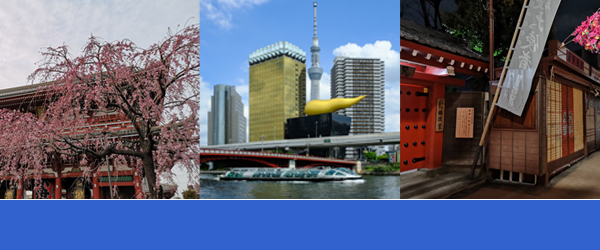Embarking on a culinary adventure through the world of Udon is like stepping into the heart of Japanese gastronomic tradition. These thick noodles, born from centuries of refinement, are more than just a dish; they are a sensory experience that transports diners to the vibrant streets of Japan.
As we delve into this universe of tastes, we set out in search of the perfect spot to satisfy our Udon cravings. Amidst the myriad of options, one locale stands out, promising not only authenticity but also the enchantment of blending the classic with the contemporary. This culinary corner vows to elevate our Udon experience beyond expectations, turning our Udon exploration into an unforgettable moment.
Origins and Preparation:
The origins of Udon can be traced back to the Nara period (710-794 AD), although its popularity grew during the Edo period (1603-1868 AD). These thick noodles, made from wheat flour, salt, and water, are characterized by their smooth and elastic texture. The dough is stretched, cut, and then boiled to obtain the noodles that form the basis of this delightful dish.
Varieties of the noodle:
There are many differents types but maybe the most typical are:
- Sanuki udon: Originally from Kagawa prefecture, they are the most common in Japan. They have a rectangular shape and a medium thickness. They are characterized by their firmness and elasticity.They are usually served in hot broth with negi (green onion) or cold with soy sauce

- Inaniwa udon: Originally from Akita prefecture, they are thinner and smoother than sanuki udon. They are handmade, stretching and rolling the dough several times. They are usually eaten cold with soy sauce and wasabi, or hot with egg and onion.
Inaniwa udon was a luxury food in the era of the shoguns. It was made with high-quality wheat flour, and its production was a laborious process. The daimyō, the feudal lords of Japan, were the main producers of inaniwa udon.
The daimyō offered inaniwa udon to the shoguns as a symbol of their loyalty and respect. Inaniwa udon was considered a delicacy, and the shoguns appreciated it.
The custom of offering inaniwa udon to the shoguns persisted for centuries. Inaniwa udon became a symbol of the relationship between the daimyō and the shoguns, and of the wealth and power of the daimyō.
(Note: Shogun Tokugawa Iemitsu had a sweet tooth, so inaniwa udon with miso sauce was his favorite.)
- Himi udon: Originally from Toyama prefecture, they are thicker and wider than sanuki udon. They are made with seawater, which gives them a salty flavor and a soft texture. They are usually served in hot broth with fish, seaweed or vegetables.

- Mizusawa udon: Originally from Gunma prefecture, they are very thin and transparent. They are made with high-quality wheat flour and spring water. They are usually eaten cold with soy sauce, ginger and green onion, or hot with duck broth and onion.

- Tajima udon: Originally from Hyogo prefecture, they are shorter and thicker than sanuki udon. They are made with whole wheat flour and spring water. They are usually served in hot broth with beef, tofu or vegetables.

Varieties and Presentations:
Udon comes in a variety of forms, from the classic hot soup to cold versions served with a dipping sauce. Among the most popular variations is “Kake Udon,” where the noodles are served in a flavorful broth made from fish stock, soy sauce, and mirin. There’s also “Zaru Udon,” a cold version served on a bamboo mat and dipped in a cold sauce made of soy sauce, mirin, and dashi.
Creative Accompaniments:
What makes Udon even more special are its diverse accompaniments. From crispy tempura to green onions, mushrooms, and kamaboko (fish cake), the variety of ingredients makes each bowl of Udon a unique experience. Those who love intense flavors can choose to add wasabi, pickled ginger, or even a sprinkle of ichimi togarashi (Japanese red chili).
Comforting and Versatile Dish:
Udon is not only a treat for the palate but also a comforting dish that suits all seasons. In winter, the hot soup warms the body, while in summer, the cold version is refreshing and light. Its versatility makes it a perfect choice for any occasion.
Udon in Popular Culture:
Udon has transcended the borders of Japan to become an iconic dish in the global culinary scene. Japanese and Udon-specialty restaurants are frequented by those seeking an authentic and delicious culinary experience.
In summary, Udon is much more than a Japanese noodle dish; it is a journey into the rich culinary tradition of the country. Its history, varieties, and delightful accompaniments make Udon an irresistible option for lovers of Japanese cuisine and those looking to explore new flavors and textures. Discover the charm of this classic Japanese dish and let its flavors transport you to the land of the rising sun!
A Staff Recommendation
For those seeking an authentic udon experience, one name stands out: Marugame Udon. Recommended by one of our staff (of course, by me) for its delectable offerings, varied udon selections, and budget-friendly prices, Marugame Udon has become a go-to destination for udon enthusiasts. (of course there are more, like HANAMARU UDON, also similar to Marugame)

A Glimpse into Marugame Udon’s Story:
Is a restaurant chain offering udon, tempura dishes and hand-crafted drinks from a theatrical kitchen, where you can watch your food being prepared. Marugame udon originated in Japan and is based on the authentic noodle-making tradition that began centuries ago in Kagawa Prefecture Sanuki udon (in Shikoku Island) in southern Japan. There are more than 800 marugame udon restaurants in Japan and also in other countries such as the United States and Indonesia.
With a rich history rooted in Japanese culinary traditions, Marugame Udon has expanded globally, boasting numerous locations across Asia, Europe, North America, and beyond. This chain has successfully bridged the gap between tradition and innovation, offering a menu that caters to both purists and those seeking modern twists on classic dishes.
Beyond the Bowl: Interesting Tidbits about Marugame Udon
Did you know that Marugame Udon has rapidly grown to have hundreds of stores worldwide? This global success is a testament to the universal appeal of udon. The chain’s commitment to affordability, without compromising on quality, has contributed to its popularity. It’s not just a place to eat; it’s a cultural exchange through the medium of food.
As you explore the world of udon, consider making Marugame Udon your next stop. Whether you’re a connoisseur or a newcomer to the world of udon, the combination of tradition, innovation, and affordability at Marugame Udon promises a delightful culinary adventure.








